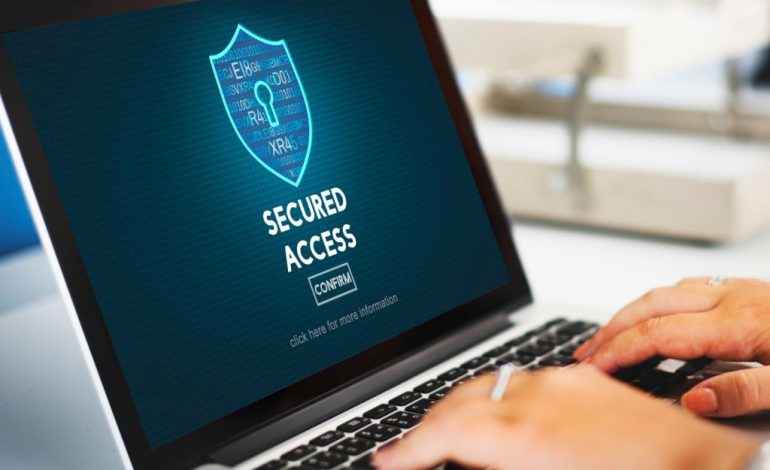Understanding Zero Trust Security

Cybersecurity is at a crossroads. With cyber threats growing in complexity and frequency, traditional security measures are no longer sufficient. Enter Zero Trust Security—a paradigm shift that promises to fortify your digital defenses, no matter the size of your organization or the nature of your digital endeavors.
Introduction to Zero Trust Security
Zero Trust Security isn’t just a buzzword; it’s a revolutionary approach to cybersecurity. Rather than assuming everything inside an organization’s network is safe, Zero Trust operates on the principle of “never trust, always verify.” This model requires continuous verification of user identities and the authenticity of devices, regardless of whether they are inside or outside the network.
The evolution of Zero Trust Security can be traced back to the growing need for robust security measures in an increasingly decentralized digital world. Traditional perimeter-based security models, which focus on defending a network’s outer edges, are becoming obsolete. In contrast, Zero Trust assumes that threats could come from anywhere and anyone, thus requiring stringent verification at every access point.
Why Zero Trust is Essential for Small Businesses and Individuals
The Growing Importance of Data Security
Data breaches and cyberattacks are not exclusive to large corporations. Small businesses, freelancers, and individuals are equally vulnerable and often more appealing targets due to typically weaker defenses. Implementing Zero Trust principles ensures that even the smallest entities can protect their sensitive information from unauthorized access.
Protecting Against Phishing and Ransomware
Phishing attacks and ransomware are among the most common threats faced by organizations of all sizes. Zero Trust Security mitigates these risks by enforcing strict identity verification protocols, thus preventing malicious actors from gaining access through compromised credentials or infected devices.
Ensuring Compliance with Regulations
Data protection regulations are becoming more stringent globally. From GDPR in Europe to CCPA in California, businesses must adhere to rigorous data security standards. Zero Trust Security helps organizations comply with these regulations by providing a framework for continuous monitoring, auditing, and secure access management.

Implementing a Zero Trust Model
Step-by-Step Guide for Small Business Owners
- Assess Your Current Security Posture:
Begin by evaluating your existing security measures. Identify vulnerabilities and areas where your current approach may fall short. This initial assessment will guide your Zero Trust implementation strategy.
- Adopt Identity and Access Management (IAM):
Implement robust IAM solutions to manage user identities and control access. Ensure that every access request is authenticated and authorized based on predefined policies. Tools like multi-factor authentication (MFA) add an extra layer of security.
- Segment Your Network:
Network segmentation is a critical component of Zero Trust. Divide your network into smaller, isolated segments to contain potential breaches and limit lateral movement by attackers. Each segment should have its own security controls and access policies.
Practical Steps for Freelancers and Students
- Secure Personal Devices:
Freelancers and students often use personal devices for work and study. Ensure your devices are protected with strong passwords, encryption, and up-to-date security software. Regularly update your operating systems and applications to patch vulnerabilities.
- Use VPNs for Secure Connections:
Virtual Private Networks (VPNs) provide secure, encrypted connections to the internet. Whether accessing sensitive data or connecting to public Wi-Fi, using a VPN ensures your data remains private and protected from prying eyes.
- Educate Yourself on Cyber Hygiene:
Understanding basic cyber hygiene practices is crucial. Be wary of phishing emails, avoid clicking on suspicious links, and regularly back up your data. Awareness and proactive measures can significantly reduce your risk of falling victim to cyberattacks.
Tools and Technologies to Facilitate Zero Trust
- Zero Trust Network Access (ZTNA):
ZTNA solutions provide secure remote access to applications and data without exposing them to the internet. These tools verify user identities and ensure that access is granted only to authorized individuals.
- Endpoint Detection and Response (EDR):
EDR solutions monitor and analyze endpoint activities to detect and respond to potential threats. They provide real-time visibility into endpoint behaviors, enabling quick identification and mitigation of suspicious activities.
- Security Information and Event Management (SIEM):
SIEM systems collect and analyze security-related data from various sources within your network. They provide insights into potential threats, allowing you to take proactive measures to prevent security incidents.
Conclusion
Zero Trust Security represents a fundamental shift in how we approach cybersecurity. By adopting a “never trust, always verify” mindset, small businesses, freelancers, students, and individuals can significantly enhance their security posture. The principles of Zero Trust—continuous verification, least privilege access, and stringent identity management—offer a robust framework for protecting sensitive information in an increasingly complex digital landscape.
Understanding and implementing Zero Trust Security is not just a technical necessity; it’s a strategic imperative for anyone looking to safeguard their digital assets. Take the first step today by assessing your current security measures and exploring Zero Trust solutions tailored to your needs.
For further insights and personalized guidance on adopting Zero Trust principles, consider reaching out to cybersecurity experts who can help you navigate this transformative journey.








